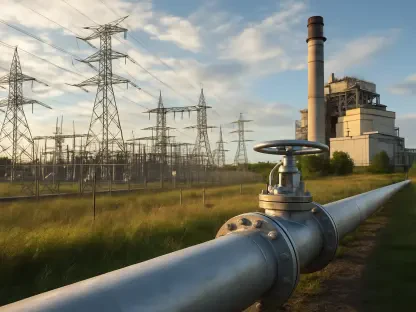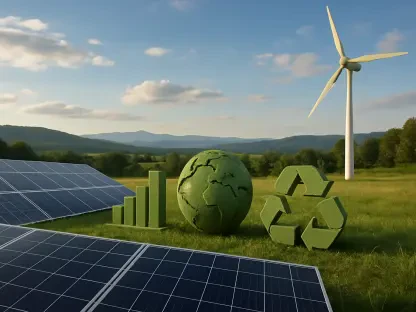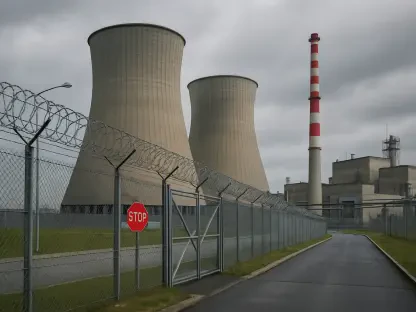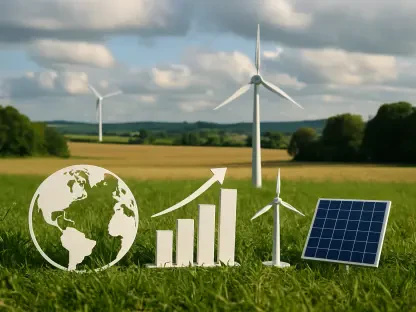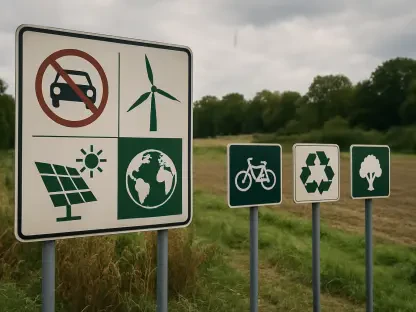North Africa is on the cusp of an energy transformation that could change the region’s economic and environmental landscape significantly. With its vast energy resources, ranging from oil and natural gas to renewable sources like wind and solar power, North Africa is positioned to play a pivotal role in the global energy sector. Large-scale investments in the region promise to address rising energy demands, boost exports to Europe, and promote sustainable economic growth. The question arises: can North Africa truly become a major renewable energy hub? Several transformative projects underway in countries like Egypt, Algeria, and Morocco suggest that the potential is certainly there.
Egypt’s Ambitious Renewable Energy Projects
Egypt is leading the charge with its ambitious initiatives aimed at increasing the share of renewables in its energy mix. The 10 GW Suez Wind Power Project is a cornerstone of this effort, marking the country’s largest wind facility. Developed by ACWA Power and backed by $170 million in funding from the African Development Bank, this $1.1 billion project aims to power approximately 11 million households. In addition to its massive energy output, it is estimated to cut 25.5 million tons of carbon emissions and save $6.5 billion annually in gas costs. Furthermore, the project is expected to create up to 120,000 jobs, providing a significant boost to the local economy. This development is particularly important as Egypt targets generating 42% of its energy from renewable sources by 2035.
Alongside wind power, Egypt is revitalizing its gas industry with projects like the Western Desert 11. This $732 million initiative seeks to expand the Western Desert Gas Complex. By installing a gas processing facility with a capacity of 600,000 million cubic feet per day, Egypt aims to ensure a steady supply of liquefied natural gas (LNG) for domestic use and the petrochemical industry. The expansion not only supports local industry but also helps reduce reliance on gas imports from the United States and Algeria. Such projects underscore Egypt’s multi-faceted approach to energy diversification, blending renewable and conventional energy sources to create a more resilient energy infrastructure.
Algeria’s Robust Gas Field Developments
In Algeria, significant progress is being made to bolster the country’s gas production capabilities. The Hassi R’Mel Expansion Project stands out as the largest gas field development initiative in the nation. Spearheaded by Sonatrach, Algeria’s state-owned oil and gas company, this $2.3 billion project aims to enhance gas production by 2027. The initiative involves constructing gas compression stations, demercurization units, and rehabilitating gas collection networks, along with adding new processing trains. The project’s successful completion is expected to solidify Algeria’s position as Europe’s third-largest gas supplier, a critical role given the continent’s ongoing energy needs.
These efforts are not only about increasing production capacity but also about modernizing the country’s energy infrastructure. By investing in state-of-the-art technology and infrastructure, Algeria aims to optimize its energy production and distribution networks. The Hassi R’Mel project will not only contribute to meeting domestic energy demands but will also strengthen Algeria’s capacity to export gas to Europe, thereby generating substantial revenue for the country. This dual focus on domestic and international markets underscores Algeria’s strategic approach to leveraging its energy resources for long-term economic stability.
Morocco’s Vision for Clean Energy Exportation
Morocco is making significant strides toward becoming a major exporter of clean energy, with projects that highlight the country’s commitment to sustainable energy solutions. The Morocco-UK Power Project is a landmark initiative in this regard. Partnering with Xlinks, Morocco aims to establish itself as a key player in the European energy market. This project has received notable financial backing, including $14.1 million from the Africa Finance Corporation, $10.2 million from GE Vernova, and a substantial $25 million investment from TotalEnergies, which acquired a stake in Xlinks. The project’s ambitious goal is to build 11.5 GW of wind and solar generation infrastructure, a 22.5 GWh/5GW battery storage system, and a 4,000 km subsea cable to export electricity to the United Kingdom.
By providing up to 8% of the UK’s electricity needs and powering seven million households, this project is set to make a significant impact on both the Moroccan and European energy landscapes. It exemplifies Morocco’s proactive approach to leveraging its abundant renewable resources, particularly solar and wind energy. The project’s success could serve as a blueprint for other nations in the region, demonstrating how strategic investments and international partnerships can drive the growth of renewable energy sectors.
North Africa’s Green Hydrogen Potential
Beyond traditional renewable energy sources, North Africa is also emerging as a global hub for green hydrogen production, a key component in the future of clean energy. Several major projects are underway, positioning the region as a prime destination for renewable energy investments. In Egypt, Globeleq’s SCZONE and ACME Group’s Sokhna projects are leading the way in hydrogen production. Similarly, Morocco’s CWP’s AMAN project and Tunisia’s initiatives by TotalEnergies’ ## Notos and ACWA Power are set to contribute significantly to global green hydrogen supplies.
These projects underscore the region’s potential to become a major player in the emerging green hydrogen market, which is expected to play a crucial role in global efforts to combat climate change. Green hydrogen offers a sustainable alternative to fossil fuels and has the potential to revolutionize various industries, from transportation to manufacturing. North Africa’s strategic location and abundant renewable energy resources make it an ideal candidate for large-scale hydrogen production, further enhancing its role in the international energy market.
Conclusion
North Africa is on the brink of a significant energy transformation that could dramatically alter the region’s economic and environmental future. Boasting abundant energy resources, including oil, natural gas, and renewable sources like wind and solar power, North Africa is set to become a key player in the global energy market. The region’s vast potential is drawing large-scale investments aimed at meeting rising energy needs, boosting exports to Europe, and facilitating sustainable economic growth. The big question is whether North Africa can truly emerge as a major renewable energy hub. Remarkable projects in countries such as Egypt, Algeria, and Morocco indicate that this goal is within reach. These countries are harnessing their natural advantages to develop substantial renewable energy infrastructures. By doing so, they not only aim to meet local energy demands but also position themselves as prime exporters of clean energy to Europe. Thus, North Africa holds the promise of playing a transformative role in both regional and global energy landscapes.



